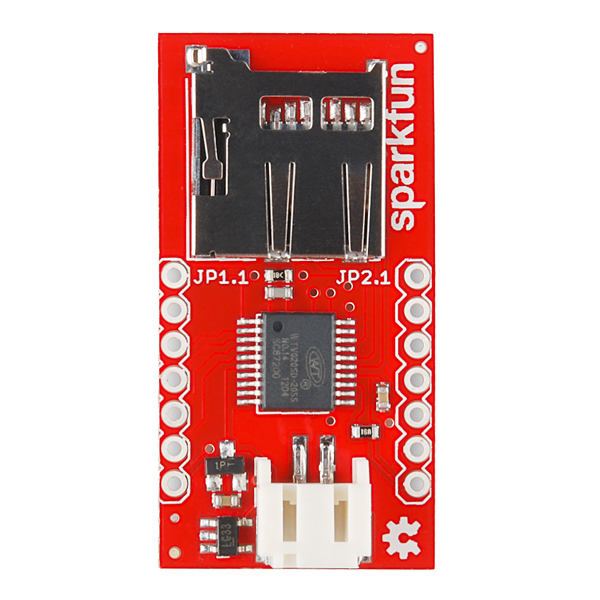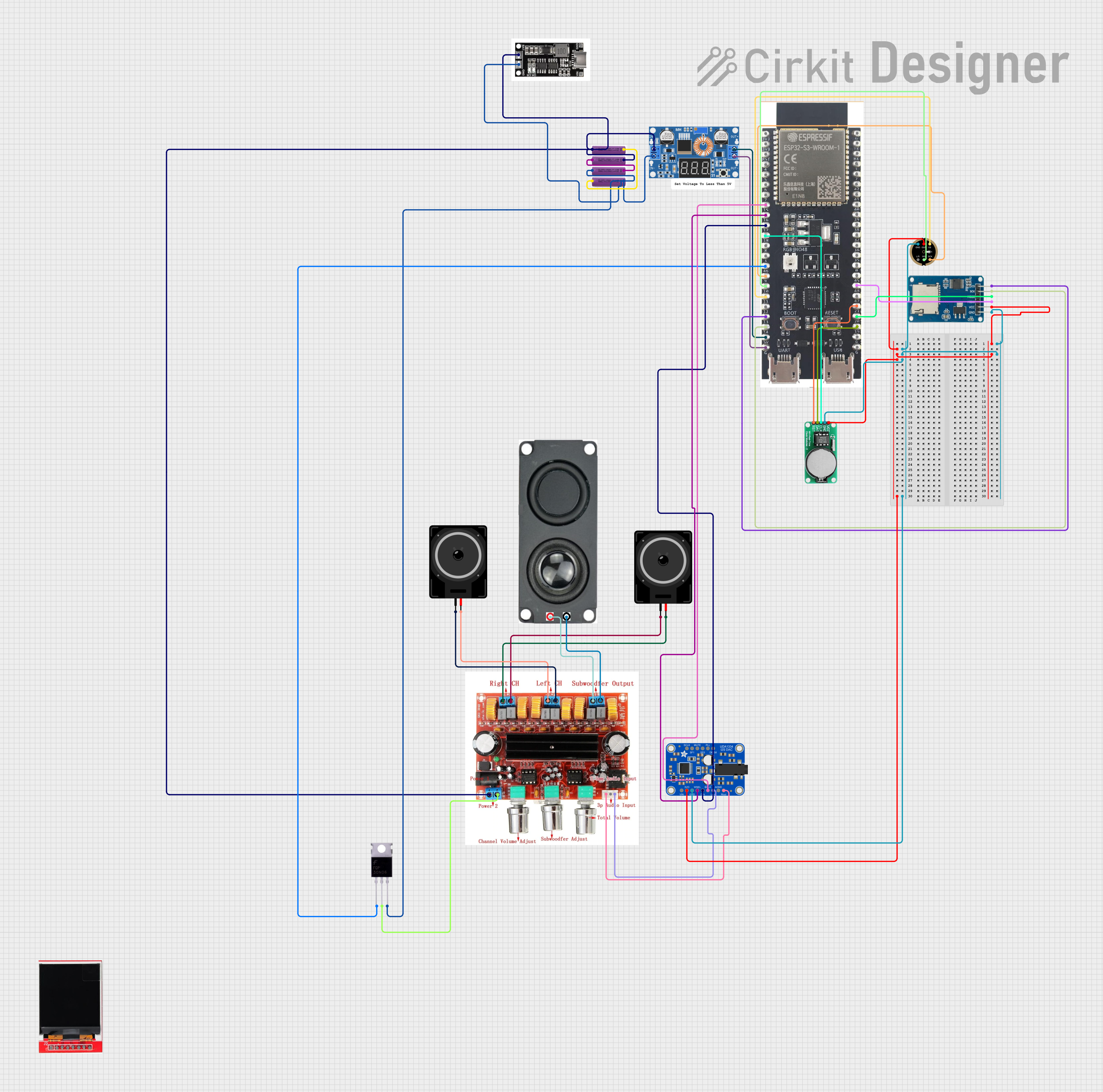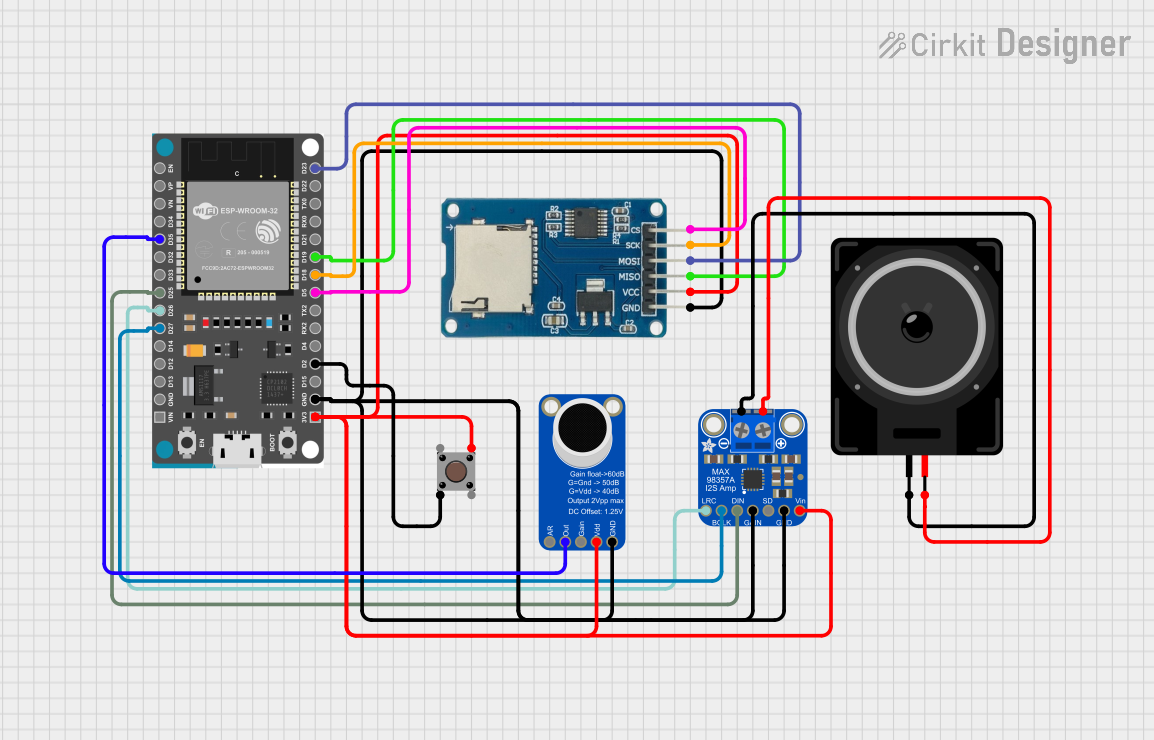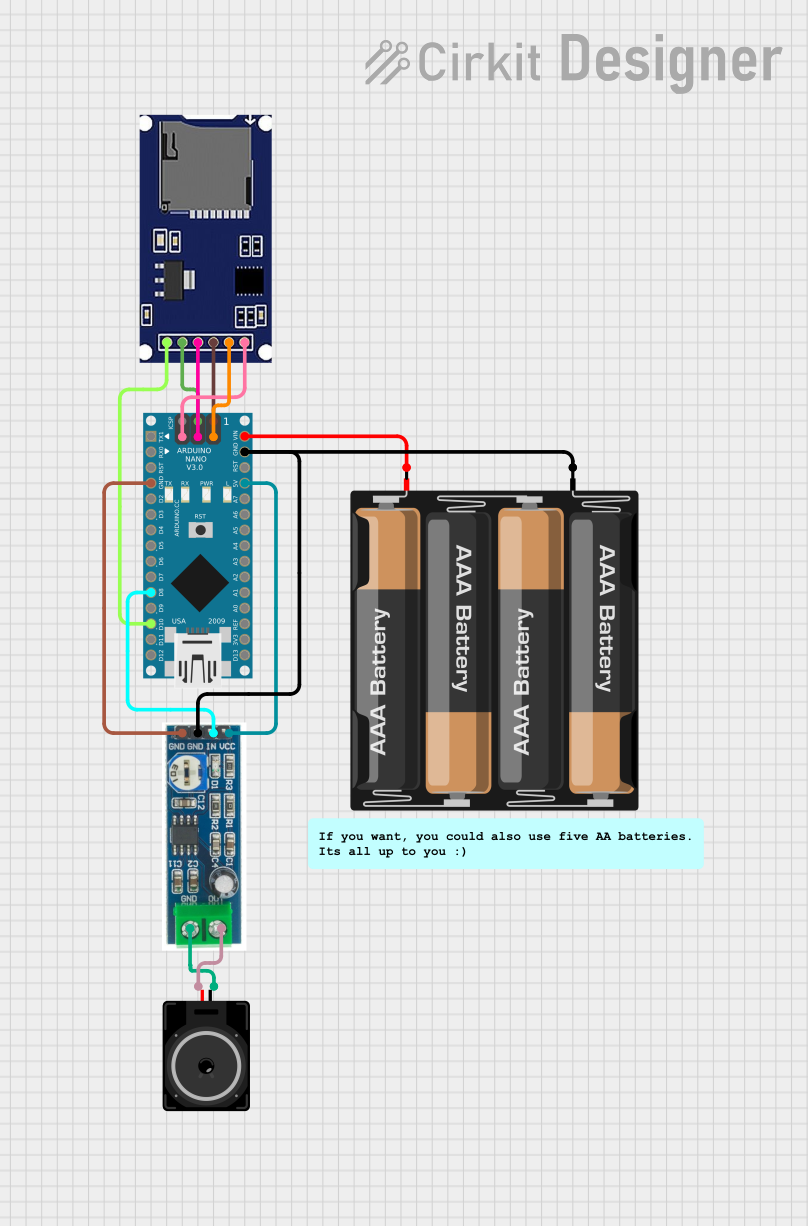
How to Use MicroSD Audio Module: Examples, Pinouts, and Specs

 Design with MicroSD Audio Module in Cirkit Designer
Design with MicroSD Audio Module in Cirkit DesignerIntroduction
The MicroSD Audio Module by SparkFun is a compact and versatile component designed for audio playback from a MicroSD card. It is ideal for embedded systems and projects requiring sound output, such as interactive displays, talking devices, or audio-enabled IoT applications. This module simplifies the process of integrating audio functionality into your projects by handling audio file decoding and playback.
Explore Projects Built with MicroSD Audio Module

 Open Project in Cirkit Designer
Open Project in Cirkit Designer
 Open Project in Cirkit Designer
Open Project in Cirkit Designer
 Open Project in Cirkit Designer
Open Project in Cirkit Designer
 Open Project in Cirkit Designer
Open Project in Cirkit DesignerExplore Projects Built with MicroSD Audio Module

 Open Project in Cirkit Designer
Open Project in Cirkit Designer
 Open Project in Cirkit Designer
Open Project in Cirkit Designer
 Open Project in Cirkit Designer
Open Project in Cirkit Designer
 Open Project in Cirkit Designer
Open Project in Cirkit DesignerCommon Applications
- Interactive kiosks and displays
- Talking toys and gadgets
- Audio-enabled IoT devices
- Alarm systems with voice or sound alerts
- Educational and DIY electronics projects
Technical Specifications
The following table outlines the key technical details of the MicroSD Audio Module:
| Parameter | Value |
|---|---|
| Operating Voltage | 3.3V to 5V |
| Current Consumption | ~30mA (idle), ~100mA (during playback) |
| Audio Format Support | MP3, WAV |
| MicroSD Card Support | Up to 32GB (FAT16/FAT32 file systems) |
| Output Type | Mono audio output (via 3.5mm jack or pins) |
| Communication Protocol | UART (default baud rate: 9600 bps) |
| Dimensions | 25mm x 20mm x 5mm |
Pin Configuration
The MicroSD Audio Module has the following pin layout:
| Pin | Name | Description |
|---|---|---|
| 1 | VCC | Power supply input (3.3V to 5V). |
| 2 | GND | Ground connection. |
| 3 | RX | UART receive pin for communication with a microcontroller (e.g., Arduino). |
| 4 | TX | UART transmit pin for communication with a microcontroller. |
| 5 | SPK+ | Positive terminal for speaker output. |
| 6 | SPK- | Negative terminal for speaker output. |
| 7 | SD_CS | Chip Select pin for the MicroSD card (used in SPI mode, if applicable). |
Usage Instructions
Connecting the Module
- Power Supply: Connect the
VCCpin to a 3.3V or 5V power source and theGNDpin to ground. - UART Communication: Connect the
RXpin of the module to theTXpin of your microcontroller (e.g., Arduino UNO) and theTXpin of the module to theRXpin of the microcontroller. - Speaker Connection: Attach a small speaker to the
SPK+andSPK-pins for audio output. Alternatively, use the 3.5mm audio jack for external audio devices. - MicroSD Card: Insert a formatted MicroSD card (FAT16/FAT32) containing audio files (MP3 or WAV) into the module's card slot.
Arduino Example Code
Below is an example of how to use the MicroSD Audio Module with an Arduino UNO for basic audio playback:
#include <SoftwareSerial.h>
// Define RX and TX pins for communication with the module
SoftwareSerial audioModule(10, 11); // RX = Pin 10, TX = Pin 11
void setup() {
Serial.begin(9600); // Initialize Serial Monitor
audioModule.begin(9600); // Initialize communication with the module
// Send initialization command to the module
audioModule.write(0x7E); // Start byte
audioModule.write(0xFF); // Version byte
audioModule.write(0x06); // Command length
audioModule.write(0x03); // Play command
audioModule.write(0x00); // Feedback byte
audioModule.write(0x00); // Data high byte (track number)
audioModule.write(0x01); // Data low byte (track number)
audioModule.write(0xEF); // End byte
Serial.println("Playing track 1...");
}
void loop() {
// The module will play the track automatically. No additional code is needed.
}
Important Considerations
- Ensure the MicroSD card is properly formatted (FAT16 or FAT32) and contains supported audio files.
- Use a level shifter if your microcontroller operates at 5V logic levels, as the module's UART pins are 3.3V tolerant.
- Avoid powering the module directly from an unregulated power source to prevent damage.
Troubleshooting and FAQs
Common Issues and Solutions
No Audio Output:
- Ensure the speaker is properly connected to the
SPK+andSPK-pins or the 3.5mm jack. - Verify that the audio file format is supported (MP3 or WAV).
- Check the MicroSD card for proper formatting (FAT16/FAT32) and file placement.
- Ensure the speaker is properly connected to the
Module Not Responding:
- Confirm that the
RXandTXpins are correctly connected to the microcontroller. - Verify the baud rate (default is 9600 bps) in your code matches the module's settings.
- Check the power supply voltage (3.3V to 5V) and ensure it is stable.
- Confirm that the
Distorted Audio:
- Use a speaker with an appropriate impedance (4Ω or 8Ω recommended).
- Ensure the power supply can provide sufficient current during playback (~100mA).
FAQs
Q: Can I use this module with a 5V microcontroller like Arduino UNO?
A: Yes, but it is recommended to use a level shifter for the UART communication pins to avoid damaging the module.
Q: What is the maximum size of the MicroSD card supported?
A: The module supports MicroSD cards up to 32GB formatted as FAT16 or FAT32.
Q: Can I control the volume of the audio playback?
A: Yes, the module supports volume control commands via UART. Refer to the module's datasheet for the specific command set.
Q: Does the module support stereo audio output?
A: No, the module provides mono audio output only.
By following this documentation, you can effectively integrate the SparkFun MicroSD Audio Module into your projects and troubleshoot common issues with ease.